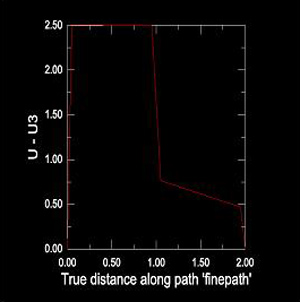Mathematical Modeling of Tendon, Nerve, and Subsynovial Connective Tissue (SSCT) Stress During Excursion of the Human Carpal Tunnel
-
Tendons and SSCT in Human Carpal Tunnel (left). Proposed model demonstrating manual manipulation (center). Initial basic model of two tendon excursion (right).

Example of displacement in Z direction
Principal Investigator: Peter C. Amadio, M.D.
Project Coordinator: Chunfeng Zhao, M.D. — zhao.chunfeng@mayo.edu
Funding Source: NIH AR049823
Joint motion and tendon excursion with respect to the subsynovial connective tissue (SSCT) strain will be combined to understand task specific motions related. It is thought that excessive or repetitive gliding may cause micro-damage to the SSCT and initiate fibrosis which in turn enlarges the volume of the soft tissue in the carpal tunnel canal. A link is necessary to combine in vitro findings and risk assessment reported in the ergonomic literature.
This projects aims to gain the knowledge needed to aid in the understanding of how a normal and an abnormal SSCT affect tendon function and also in identifying mechanical properties within the carpal tunnel which may predispose a patient to the onset of Carpal Tunnel Syndrome (CTS). Mathematical modeling will be developed for analyzing various tasks from a mechanical perspective, while at the same time merging external measures of finger motion with internal measures of SSCT strain. Once the basic model is validated, a tendon model will be designed to mimic everyday tasks such as typing, playing an instrument or various repetitive hand activities.
This will lead to an understanding of how isolated finger motions and wrist angles may generate stress and increase the volume of the tissue within the carpal tunnel canal.